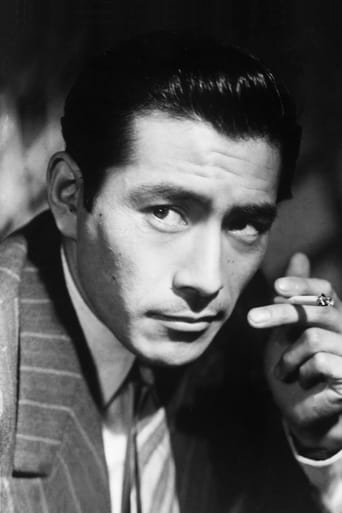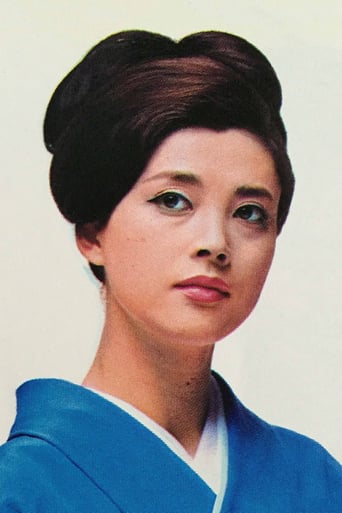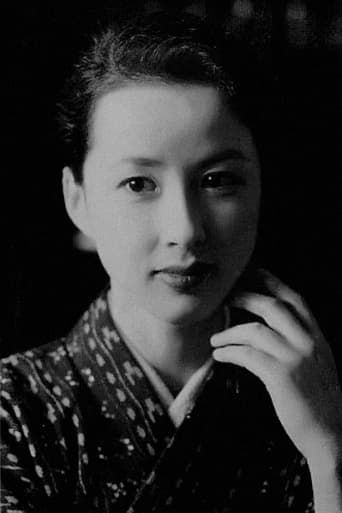SpuffyWeb
Sadly Over-hyped
Steineded
How sad is this?
Lightdeossk
Captivating movie !
BallWubba
Wow! What a bizarre film! Unfortunately the few funny moments there were were quite overshadowed by it's completely weird and random vibe throughout.
MisterWhiplash
I watched the first part of the Musashi Miyamoto trilogy, dubbed simply Samurai 1 on the video, thinking that it might be a lot more stylish &/or violent than I was led to believe. It is the first part, but of the second part it is but only up to a point. This is a 1950s style epic tale through and through, and the violence is done in a kind of sweepingly done style, where it goes by fairly quick, no blood at all, though all the while there's the sense of loss that goes with seeing, for example, the big battle sequence early on. This is a trilogy that I saw long ago, but this one, along with some scenes from 2 and 3, sticks out in my mind to this day. There's a lot of touching care taken in what was Hiroshi Inagaki's power as a filmmaker. Like a Hollywood director actually more than a typical Japanese director, one might say, his take on the legendary samurai Miyamoto is one of reverence but wisdom, of production values of the highest standard (of the studio standard of Toho at the time), with brilliant color photography putting the colors in striking displays throughout at a time when Japan was first getting into it. If it's less than really great, like a Kurosawa film, it's maybe because Inagaki is a little too comfortable at times with what's 'safe' in the story, particularly with the romance between Takezo/Musashi (Toshiro Mifune) and Otsu (Kaoru Yachigusa). This actually becomes a little more unbelievable at times in parts 2 and 3, but for the sake of its magisterial, dedicated studio roots, it's not that bad, most notably the final scene at the bridge. Some of the plot on the first viewing may not be completely clear, at least through parts of the middle section involving the betrayals and Takezo's friend Matahachi's relationship with Oko. There are one or two really noteworthy supporting performances, like from Mitsuko Mito as Oko. But it's really Mifune's show here, and he plays Takezo in this film like a more naive but still as ambitious and unruly version of his character in Seven Samurai. He's not altogether, but he has it in him to be more, which of course then leads out into the rest of the trilogy. It's one of his better performances outside of his work with Kurosawa, and it gets better as the films go on.Of course, it's best to start here with Inagaki's passionate, rousing work, and even if it isn't the best of the three it still has its high points. It's a very good example of an 'old-school', big-budget Toho picture with their brand of excitement and romance. If you're thinking it will be as graphic or darkly comic as Kurosawa's films though, it's not really here (though only in little sparks, as is more Inagaki's straghtforward style).
Atavisten
This movie doesn't take much brainpower, but is a fine tale about two friends who leave their village in a quest for glory. Its set in feudal age Japan and the scenery is beautiful! Mountains, green pastures, lakes, forests with bamboo undergrowth and the cities and villages in typical style serves as the backdrop.Takezo (Mifune) is the strong and wild character all the woman likes, but he cant handle the attention very well so he keeps running. All the characters as well as the story is not hard to get, so this is one to bring in the kids on.Will defo check the rest of the series out, maybe the books as well.
James Osborne
Toshiro Mifune (of Akira Kurosawa fame) stars as Takezo. A young man who seeks fame as a warrior. He and his friend Matahachi join to fight in a civil war. When their "platoon" (for lack of a better term due to my lack of Japanese warfare knowledge) is wiped out, the two young men confide in the help of two women.The two women rob the dead bodies of Samurai. When a group of bandits wants to cash in on their treasure, Takezo fights off and kills the bandits. When Oko (the mother of the two women) observes this, she falls for Takezo. When he refuses and runs off, she tells Akemi and Matahachi that Takezo forced himself, and she refused. So, Akemi, Oko, and Matahachi leave. Only for Takezo to return to an empty home. Takezo tries to return to his home village to let Matahachi's fiancé and mother know that he is still alive. When he is accused of leaving Matahachi for dead he is pursued by the town in a manhunt. Otsu, Matahachi's fiancé, learns of Matahachi's marriage to Oko. She eventually falls for Takezo. During all this, Takezo is capturd by a Buddhist monk. Only part of the monk's larger scale plan of eventually moralizing and training Takezo. Thus, Takezo becomes the film title, Miyamoto Musashi.An excellent and colorful film. Toshiro Mifune excels as Takezo. He proves that he is up to play any type of character. His character is somewhat similar to that of his character in Seven Samurai. Ambitious, but not as strong and mature as he should be for a samurai.If you don't know too much about classic samurai cinema, this is a good place to start (this is part one in a trilogy of three films). With his short running time and color film, it may help you break into the other samurai classics that are in B&W (Kurosawa's Seven Samurai, Yojimbo/Sanjuro, etc.,).As a note, this won of the Academy Award for Best Foreign Language Film in 1955.
mtwmtw
The first of a trilogy that really should be viewed as a whole. This elegant film tells of the very humble beginnings of Miyamoto Mushashi, who has become a paragon of Bushido and Giri. A Samurai's Samurai.However, you have no inkling of this at the beginning of the movie. What we see is dirt and squalor and a desperate chance to get out from beneath the mud. It all goes wrong and things look desperate.As the movie progresses in the slow, methodical, often obtuse, Japanese fashion we become engrossed in the plot and the lives of our protagonists. Toshiro Mifune shows a vast range of emotion, power and character growth in these this movie. To get the full flavour of the story you must also watch the next two movies in this trilogy (2) "Duel at Ichijoji Temple"(1955) (USA)and (3) "Duel on Ganryu Island" (1956)(USA.





